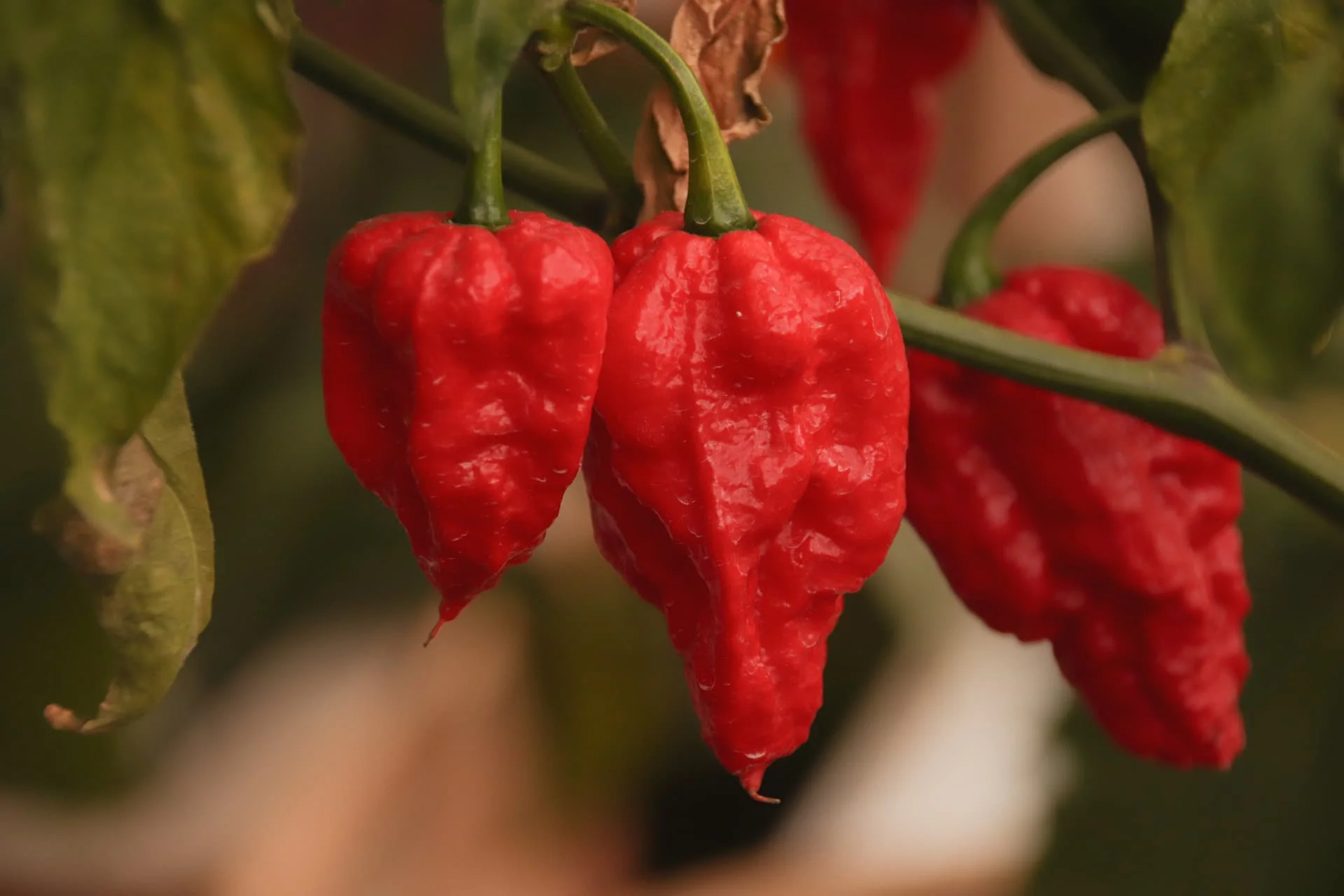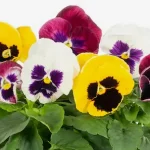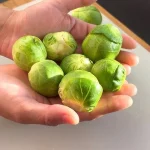The Fiery World of Ghost Peppers: A Comprehensive Guide
Introduction
Ever heard of a pepper so hot it’s like eating fire? Enter the ghost pepper. This tiny chili packs a punch that can leave even the bravest spice lovers reaching for a glass of milk. Known for its intense heat and unique flavor, the ghost pepper has earned its place in the world of super-hot chilies. But there’s more to this fiery pepper than just its heat.
The ghost pepper, also known as Bhut Jolokia, is a chili pepper that originates from the northeastern region of India. It’s renowned for its extreme spiciness, which has earned it a spot in the Guinness World Records. Beyond its heat, the ghost pepper has a fascinating history and a variety of uses that make it a staple in many kitchens and cultures.
Ghost peppers have been cultivated for centuries in India, particularly in Assam, Nagaland, and Manipur. They were traditionally used in local cuisines and as a natural remedy for various ailments. In 2007, the ghost pepper gained international fame when it was recognized as the world’s hottest chili pepper, putting it on the map for spice enthusiasts worldwide.
From its distinctive appearance and mind-blowing heat to its surprising health benefits and diverse culinary applications, the ghost pepper is much more than just a fiery ingredient. Whether you’re a seasoned chili head or just curious about this famous pepper, this guide will take you through everything you need to know about ghost peppers. So, buckle up and get ready for a spicy adventure into the world of one of the hottest peppers on the planet.
Characteristics of Ghost Pepper
Physical Appearance
Ghost peppers are small, wrinkled, and typically red or orange when fully ripe. They measure about 2.5 to 3.3 inches in length and have a distinctive, bumpy texture.
Scoville Heat Units
The heat of a chili pepper is measured in Scoville Heat Units (SHU). Ghost peppers range from 800,000 to over 1,000,000 SHU, making them one of the hottest peppers in the world. For comparison, a jalapeño pepper measures between 2,500 and 8,000 SHU.
Flavor Profile
While ghost peppers are primarily known for their heat, they also have a complex flavor profile. They offer a fruity, sweet taste with smoky undertones, adding depth to dishes beyond just spiciness.
Varieties of Ghost Peppers
Ghost peppers, while primarily known in their classic form, have several varieties that exhibit different colors, shapes, and levels of heat. Here’s a closer look at some of the most popular and interesting types:
Classic Red Ghost Pepper
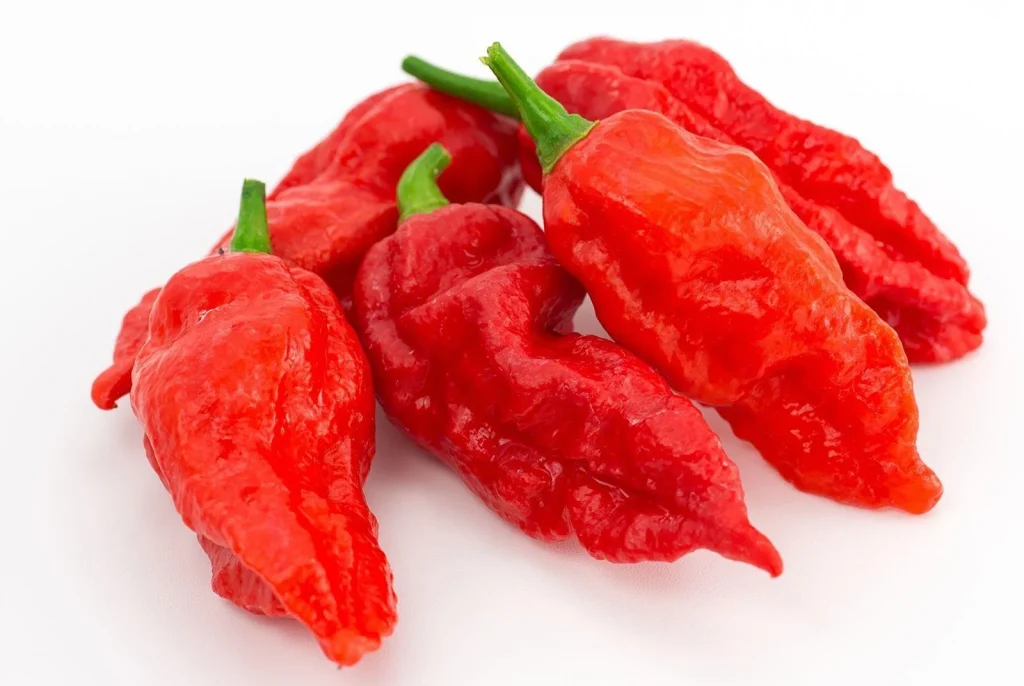
Appearance: Bright red, wrinkled skin with a pointed end. Heat Level: 800,000 to 1,000,000+ Scoville Heat Units (SHU). Flavor Profile: Fruity and slightly smoky, with intense heat.
Chocolate Ghost Pepper
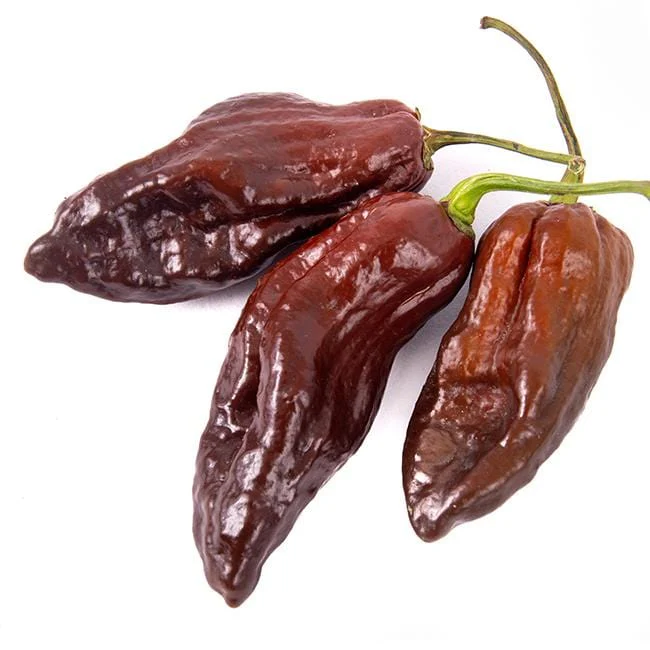
Appearance: Dark brown, chocolate-like color. Heat Level: Similar to the red variety, ranging from 800,000 to 1,000,000+ SHU. Flavor Profile: Richer, earthier flavor with a touch of sweetness.
Yellow Ghost Pepper
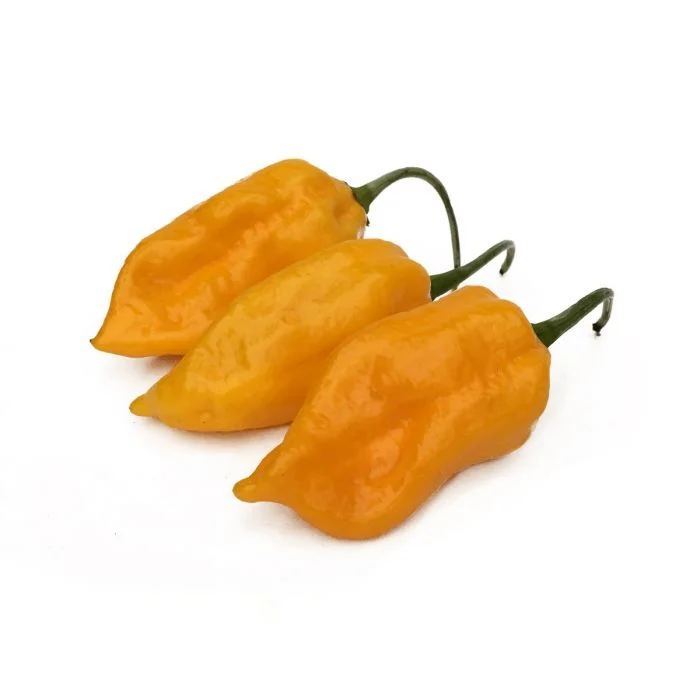
Appearance: Bright yellow, smoother skin. Heat Level: Slightly milder than the red and chocolate varieties, typically around 800,000 SHU. Flavor Profile: Fruity and citrusy, with a burst of tanginess.
Orange Ghost Pepper
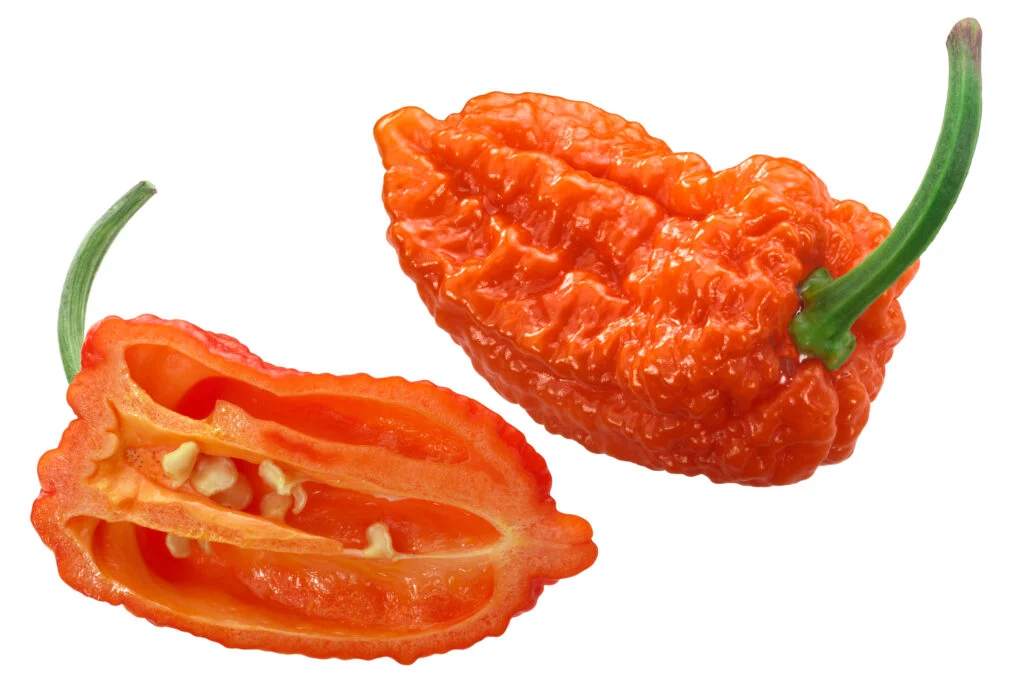
Appearance: Vibrant orange color. Heat Level: Comparable to the red variety, around 800,000 to 1,000,000 SHU. Flavor Profile: Sweet and fruity, with a vibrant flavor that complements its heat.
Purple Ghost Pepper
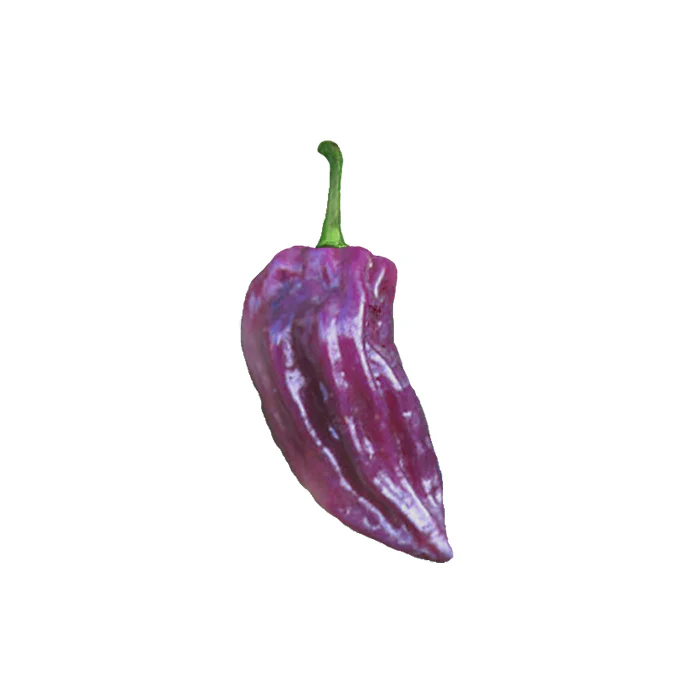
Appearance: Deep purple hue that can transition to red when fully ripe. Heat Level: Slightly variable, generally within the 800,000 to 1,000,000 SHU range. Flavor Profile: Fruity and slightly floral, with a unique tang.
Peach Ghost Pepper
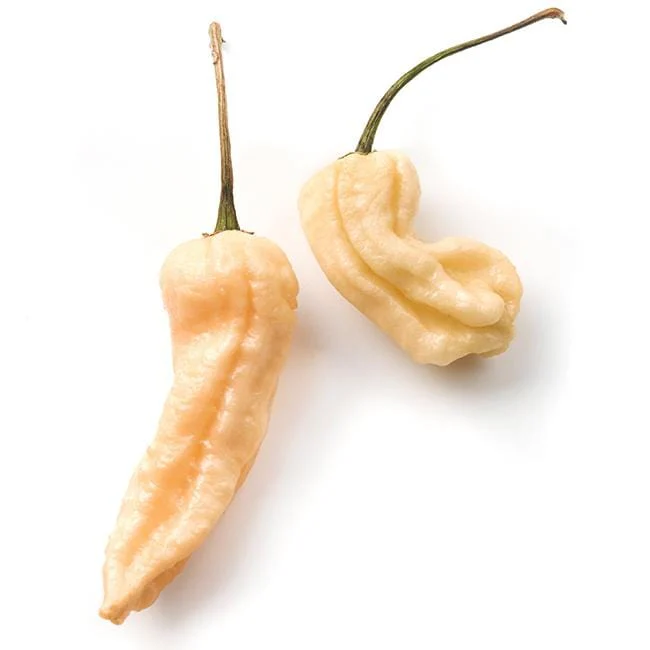
Appearance: Soft peach color, with a slightly smoother skin. Heat Level: Around 800,000 SHU. Flavor Profile: Mildly sweet and fruity, with a complex aftertaste.
Growing Ghost Peppers
Ideal Climate and Soil Conditions
Ghost peppers thrive in hot, humid climates with temperatures between 75°F and 95°F. They prefer well-drained, sandy loam soil with a pH between 6.0 and 6.8.
Planting Tips
Start ghost pepper seeds indoors 8-10 weeks before the last frost date. Transplant seedlings outdoors once the temperature is consistently warm. Ensure they receive plenty of sunlight and water regularly, but avoid overwatering.
Care and Maintenance
Keep the soil consistently moist and provide adequate support for the plants as they grow. Mulching can help retain soil moisture and regulate temperature. Regularly inspect for pests and diseases to keep your plants healthy.
Harvesting Ghost Peppers
When to Harvest
Ghost peppers are typically ready for harvest 120-150 days after planting. The peppers should be fully colored (red, orange, or yellow) and slightly soft to the touch.
How to Harvest
Use gloves to handle the peppers, as their oils can cause skin irritation. Cut the peppers from the plant using scissors or pruning shears, leaving a small stem attached to each pepper.
Uses of Ghost Peppers
Culinary Uses
Ghost peppers are popular in hot sauces, salsas, and marinades. They can also be dried and ground into powder for use as a spice. Their intense heat and unique flavor make them a favorite among spice lovers.
Medicinal Uses
In traditional medicine, ghost peppers have been used to treat stomach issues, improve circulation, and relieve pain. Capsaicin, the compound responsible for their heat, has anti-inflammatory properties and can be used in topical creams for pain relief.
Uses for Ghost Peppers
Culinary Uses
Hot Sauces
Ghost peppers are a popular ingredient in hot sauces due to their intense heat and unique flavor. They can be blended with vinegar, garlic, onions, and other spices to create a fiery condiment.
Salsas and Marinades
Add ghost peppers to salsas and marinades to give a spicy kick. They pair well with tomatoes, onions, cilantro, and lime juice in salsas, or with oil, vinegar, and herbs in marinades.
Spice Powders
Dry and grind ghost peppers into a fine powder to use as a spice. A small amount can add significant heat to dishes like soups, stews, and chili.
Pickling
Ghost peppers can be pickled with vinegar, salt, and spices. Pickled ghost peppers can be used as a spicy condiment or garnish.
Medicinal Uses
Pain Relief
Capsaicin, the compound responsible for the heat in ghost peppers, has analgesic properties. It is used in topical creams and ointments to relieve pain from arthritis, muscle strains, and other conditions.
Improved Digestion
Capsaicin can stimulate digestive enzymes and increase gastric juice production, aiding in digestion. It can also help reduce symptoms of indigestion and bloating.
Other Uses
Natural Insect Repellent
Capsaicin in ghost peppers can deter insects. Sprays made from ghost peppers can be used in gardens to keep pests away from plants.
Pepper Sprays
Due to their extreme heat, ghost peppers are used in the production of pepper sprays for self-defense. The capsaicin causes intense irritation to the eyes and skin of attackers.
Cultural Uses
Traditional Medicine
In traditional Indian medicine, ghost peppers have been used to treat various ailments, including stomach issues, pain relief, and improving circulation.
Challenges and Competitions
Ghost peppers are often featured in food challenges and eating competitions, where participants test their heat tolerance by consuming dishes made with the peppers.
Health Benefits and Risks
Nutritional Benefits
Ghost peppers are rich in vitamins A and C, which are important for immune function and skin health. They also contain antioxidants that can help protect against cellular damage.
Potential Risks and Precautions
Due to their extreme heat, ghost peppers can cause severe irritation to the skin, eyes, and digestive system. Always handle with gloves and avoid touching your face. If you experience severe pain or discomfort after consuming ghost peppers, seek medical attention.
Ghost Pepper Challenges and Competitions
Popular Challenges
Ghost pepper challenges, where participants eat raw ghost peppers or dishes made with them, have become a popular trend. These challenges test one’s tolerance to heat and are often featured in competitive eating contests.
Safety Tips for Participants
If you’re thinking about participating in a ghost pepper challenge, start with a small amount to gauge your tolerance. Have dairy products like milk or yogurt on hand to help neutralize the heat. Drink plenty of water and avoid consuming large quantities at once.
Cultural Impact of Ghost Peppers
Ghost Peppers in Media
Ghost peppers have gained fame through various media outlets, including cooking shows, YouTube challenges, and social media. Their notorious heat makes them a popular subject for spice enthusiasts and thrill-seekers alike.
Ghost Peppers in Popular Culture
Ghost peppers have also made appearances in movies, TV shows, and even video games. Their reputation as one of the world’s hottest peppers has cemented their place in popular culture.
Comparing Ghost Peppers to Other Hot Peppers
Ghost Pepper vs. Habanero
While both peppers are extremely hot, ghost peppers are significantly hotter than habaneros. Habaneros range from 100,000 to 350,000 SHU, whereas ghost peppers can exceed 1,000,000 SHU.
Ghost Pepper vs. Carolina Reaper
The Carolina Reaper currently holds the title of the world’s hottest pepper, with an average of 1.6 million SHU. Ghost peppers are slightly milder but still pack a serious punch.
Purchasing and Storing Ghost Peppers
Where to Buy
Ghost peppers can be found at specialty grocery stores, farmers markets, and online retailers. When buying ghost peppers, look for firm, brightly colored peppers without any soft spots or blemishes.
How to Store
To keep ghost peppers fresh, store them in a plastic bag in the refrigerator. They can also be dried or frozen for longer storage. When freezing, place them in an airtight container or freezer bag to prevent freezer burn.
Common Myths about Ghost Peppers
Debunking Myths
One common myth is that eating ghost peppers can cause serious harm or even death. While they are extremely hot and can cause discomfort, consuming ghost peppers in moderation is generally safe for most people.
Facts vs. Fiction
Another myth is that drinking water will help cool the burn from a ghost pepper. In reality, water can spread the capsaicin and intensify the heat. Dairy products, like milk or yogurt, are more effective at neutralizing the burn.
Ghost Peppers Around the World
Popularity in Different Countries
Ghost peppers are popular in many countries around the world. In India, they are a staple in traditional dishes. In the United States, they have gained popularity in hot sauces, spicy foods, and culinary challenges.
Unique Dishes and Uses
In addition to their use in hot sauces and salsas, ghost peppers are also used in unique dishes like ghost pepper infused chocolates and cocktails. Their intense heat and complex flavor make them a versatile ingredient in many different cuisines.
FAQs About Ghost Peppers
Q1: How hot is a ghost pepper?
A: Ghost peppers are extremely hot, measuring between 800,000 and 1,001,304 Scoville Heat Units (SHU). This makes them one of the hottest peppers in the world.
Q2: How can I safely handle ghost peppers?
A: Always wear gloves when handling ghost peppers to avoid skin irritation. Wash your hands thoroughly after handling, and avoid touching your face, especially your eyes.
Q3: Can I grow ghost peppers at home?
A: Yes, ghost peppers can be grown at home. They require a warm climate, well-drained soil, and plenty of sunlight. Start seeds indoors 8-10 weeks before the last frost and transplant outside once the weather is consistently warm.
Q4: What are the culinary uses of ghost peppers?
A: Ghost peppers can be used in hot sauces, salsas, marinades, and as a spice in various dishes. Due to their extreme heat, they should be used sparingly to add flavor and heat to recipes.
Q5: Are there health benefits to eating ghost peppers?
A: Ghost chili contain capsaicin, which has anti-inflammatory properties and can help boost metabolism. They are also rich in vitamins A and C. However, due to their intense heat, they should be consumed in moderation.
Conclusion
Ghost peppers, with their intense heat and distinctive flavor, are more than just a spicy ingredient—they’re a culinary and cultural phenomenon. From their origins in India to their global fame, these fiery chilies offer a wide range of uses, from enhancing dishes with their heat to providing natural remedies and even serving in self-defense products. Whether you’re a seasoned spice enthusiast or a curious cook, incorporating ghost peppers into your kitchen can add both excitement and depth to your culinary adventures. However, due to their extreme spiciness, it’s essential to handle them with care and use them judiciously. Embrace the thrill of ghost peppers and discover the unique flavors and applications they bring to the table!

